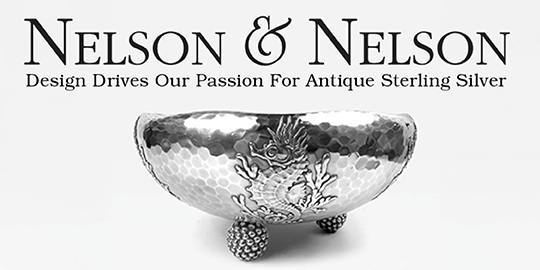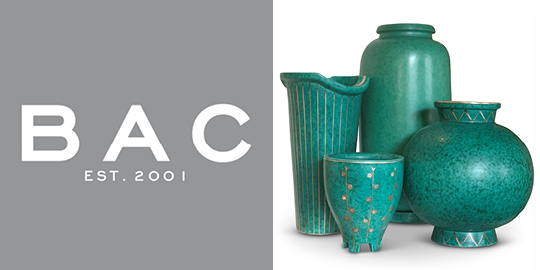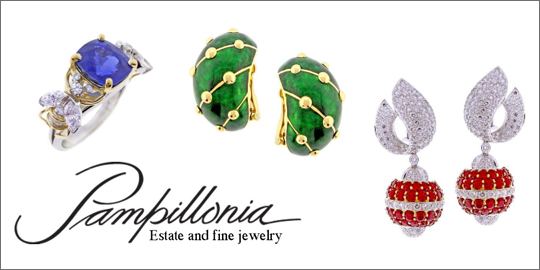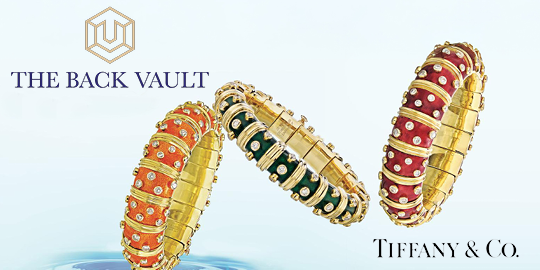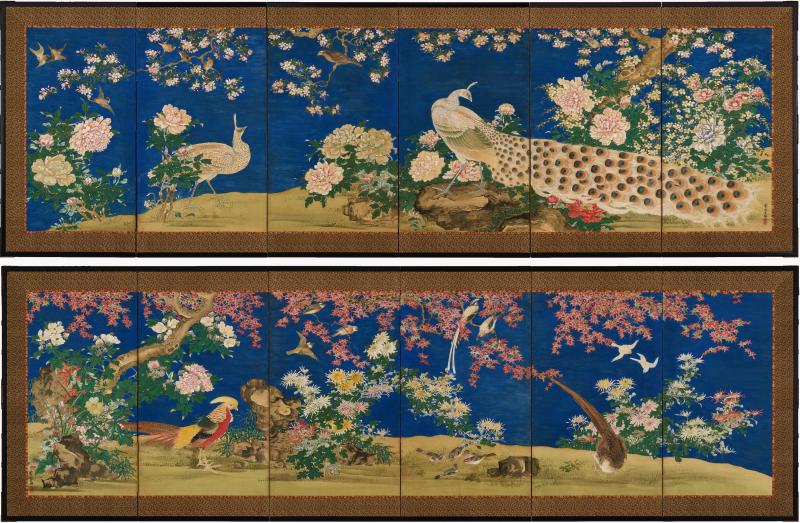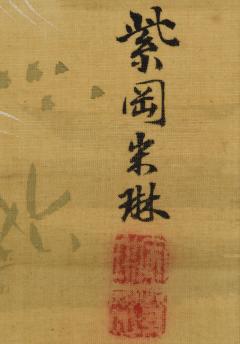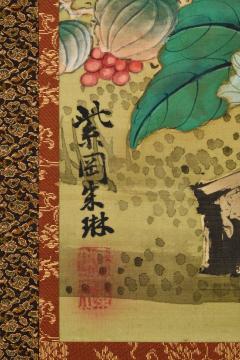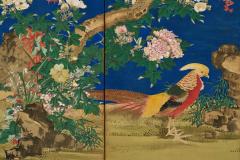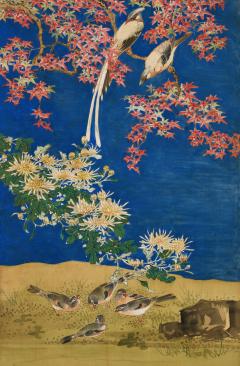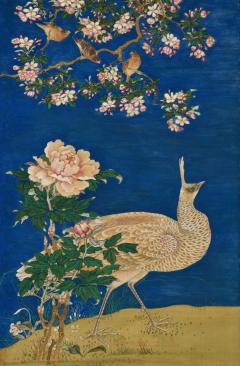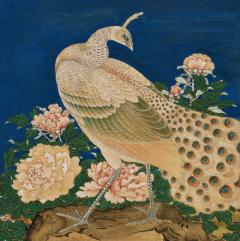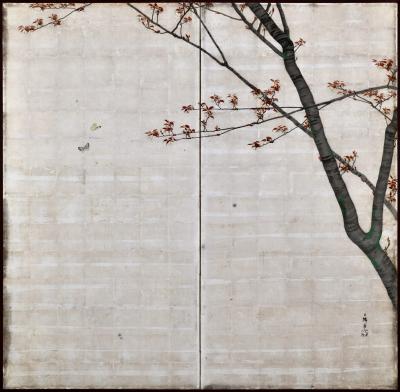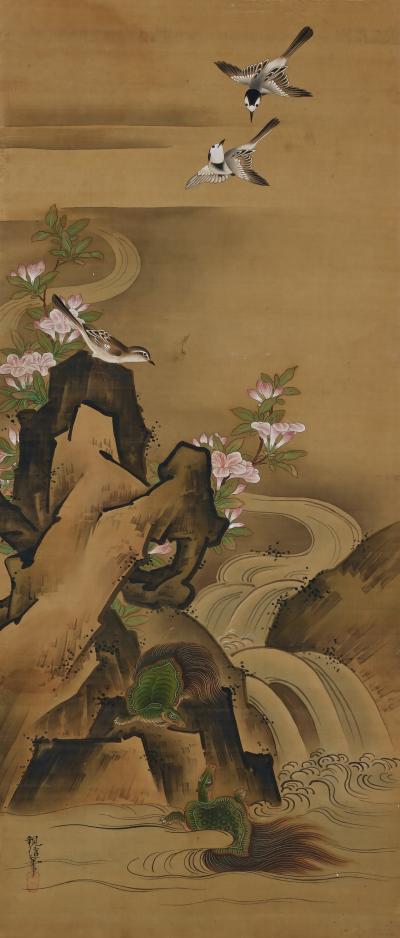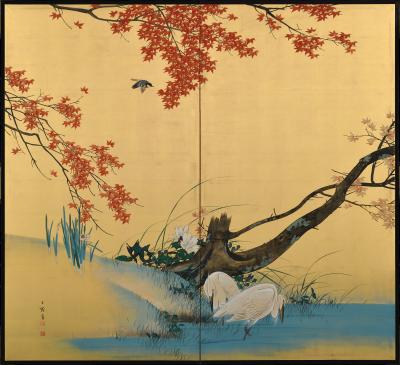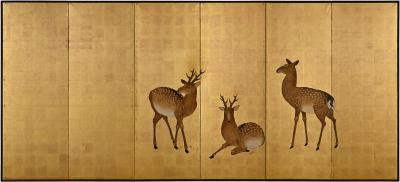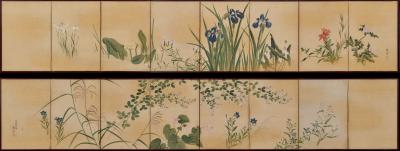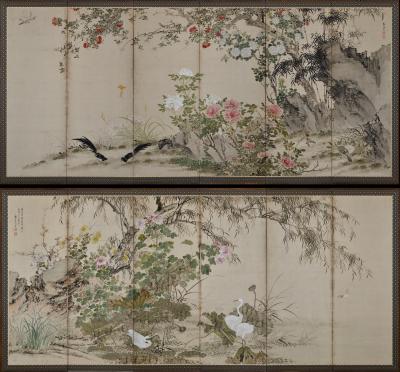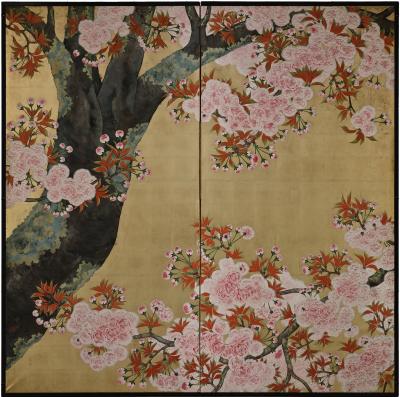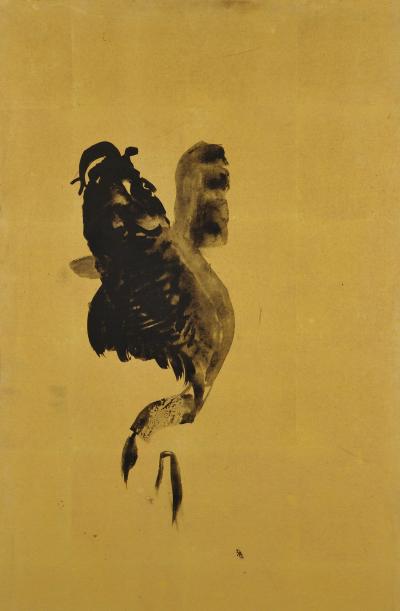Listings / Fine Art / Paintings / Still Life
Mid 19th Century Japanese Screen Pair. Flowers & Birds of the Four Seasons
-
Description
Shioka Sorin (1781-1850)
Flowers & Birds of the Four Seasons
Pair of six-panel Japanese Screens. Ink, gofun and pigments on silk.
Dimensions (each screen): H. 91.5cm x W. 285cm (36” x 112”)
Price: UDS 68,000
A pair of smaller Japanese six-fold screens by the Nanpin school artist Shioka Sorin (1781-1850). The highly decorative flowers of these Japanese screens evoke the passage of the seasons from Spring through to Winter. Flowering crabapple and peonies denote spring and summer on the right screen. On the left screen ornamental chrysanthemums, maple and hibiscus represent autumn and the red berries at the extreme left lead us in to winter. The white peacocks and Chinese pheasants are depicted for their extraordinary plumage and colors, with the flowers and birds combining to create a brilliant patterned effect. Almost the entire surface of the silk panels are covered in mineral pigments which contributes greatly to the tactile richness of the surface.
Colorful Chinese flower and bird paintings were created by court painters during the Ming dynasty (1368–1644) to decorate the grand halls of imperial palaces, where they could also serve as metaphors for the emperor and his court. However, Japanese artists transformed the courtly Chinese painting tradition into more exquisite, decorative and distinctive ‘Japanese’ style. From the 17th century on, patrons of the arts came from more than just the ruling classes. As the buying power of the traditional elites of the aristocracy and samurai dwindled, wealth increased among merchants, who were long considered at the bottom of the social scale. The merchant class patronized newly formed groups of artists who better represented their aesthetics and interests. Paintings from the Nanpin school in a naturalistic manner reflected a fascination with the exotic and a burgeoning interest in empirical science. This new style introduced through Nagasaki spread to the art world in Kamigata (Kyōto and Ōsaka) and Edo, giving rise to a new style of painting which had a significant impact on the future direction of Japanese art. Their work, mostly of flower and bird subjects, derives from a blend of realism with a brightly colored decorative manner. The Chinese artist Shen Nanpin (Shen Quan) is credited as being the originator of the style, arriving in Japan in 1731. He was a relatively unknown painter of the Ming academic style though quickly gained great fame in Japan.
Shiokawa Sorin (1781-1850) was the son of So Shizan (1733-1805) and the grandson of So Shiseki (1715-1786). A native of Edo, he inherited and continued the family painting traditions and passed on their Nanpin style. His grandfather, So Shiseki, was a very influential artist in Japanese painting history. He took the Nanpin school beyond its origins in Nagasaki and beyond its basis in bird and flower subjects. Among his most famous students were Shiba Kokan and Sakai Hoitsu. -
More Information
Documentation: Signed Period: 19th Century Creation Date: Mid 19th Century Styles / Movements: Asian Art Incollect Reference #: 764100 -
Dimensions
W. 112.2 in; H. 36.02 in; W. 285 cm; H. 91.5 cm;
Message from Seller:
Kristan Hauge Japanese Art, based in Kyoto's museum district since 1999, specializes in important Japanese screens and paintings for collectors, decorators, and museums worldwide. Contact us at khauge@mx.bw.dream.jp or +81 75-751-5070 for exceptional access to Japanese art and history.







